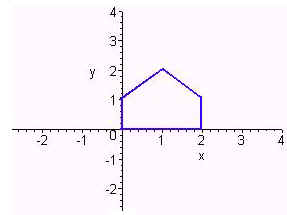Math 203 Practice Midterm 3
Please work out each
of the given problems. Credit will
be based on the steps towards the final answer.
Show your work. Do your work
on your own paper.
Problem 1
A physicist has plotted
the position of a projectile over time. Based
on Newton’s laws, the projectile should ideally travel in a parabolic path.
Use matrices to find the most likely equation of this parabola.
(You may use a calculator, but show the matrices that are being
manipulated).
|
Time |
1 |
2 |
3 |
4 |
|
Distance |
2 |
30 |
20 |
2 |
Problem 2
A
new species of fish is introduced into the Truckee River.
Initially 2 fish were stocked.
It takes one year for this species to spawn, when each fish averages 3
successful children each year. (So
there are 2 at the beginning, 2
at the end of the first year, 8 at the end of the
second year, 14 at the end of the third year, etc.)
A.
Assuming no fish die, set up a recursion relationship that gives the
number of fish wn
at the end of year n.
B.
Find a matrix A such that wn-1
= An-1(w0, w1)T
.
C. Find a diagonal matrix D such that A is similar to D.
Problem 3
Let
V be the subspace of differentiable functions
spanned by {ex, e2x, e3x}
and let
L: V
---> V
be the linear transformation with
L(f(x)) = f ''(x) - 3f '(x) + 2f(x)
A.
Write down the matrix AL with
respect to the given basis.
B.
Find the a basis for the kernel and range of L.
Problem 4
Let W
= Span{(1,1,0,1), (0,1,2,3)}. Find
a basis for the orthogonal complement of W.
Problem 5
Let

and T
be the affine transformation T(x) = Ax + b
. Sketch the image under T
of the figure below.

Problem 6
Let L: V ---> V be a linear transformation. Use the fact that
dim(Ker L) + dim(Range L) = dim(V)
to show that if L
is one to one then L is onto.
Problem 7
Let A
and B be matrices and let v
be an eigenvector of both A and B.
Prove that v
is an eigenvector of the product AB.
Problem 8
Answer True of False and
explain your reasoning.
A. Let A be a 3x3 matrix such that the columns of A form an orthonormal set of vectors. Then

B. Let V be the vector space of continuous functions then the expression
<f, g> = f(1) + g(1)
defines an inner product on V.